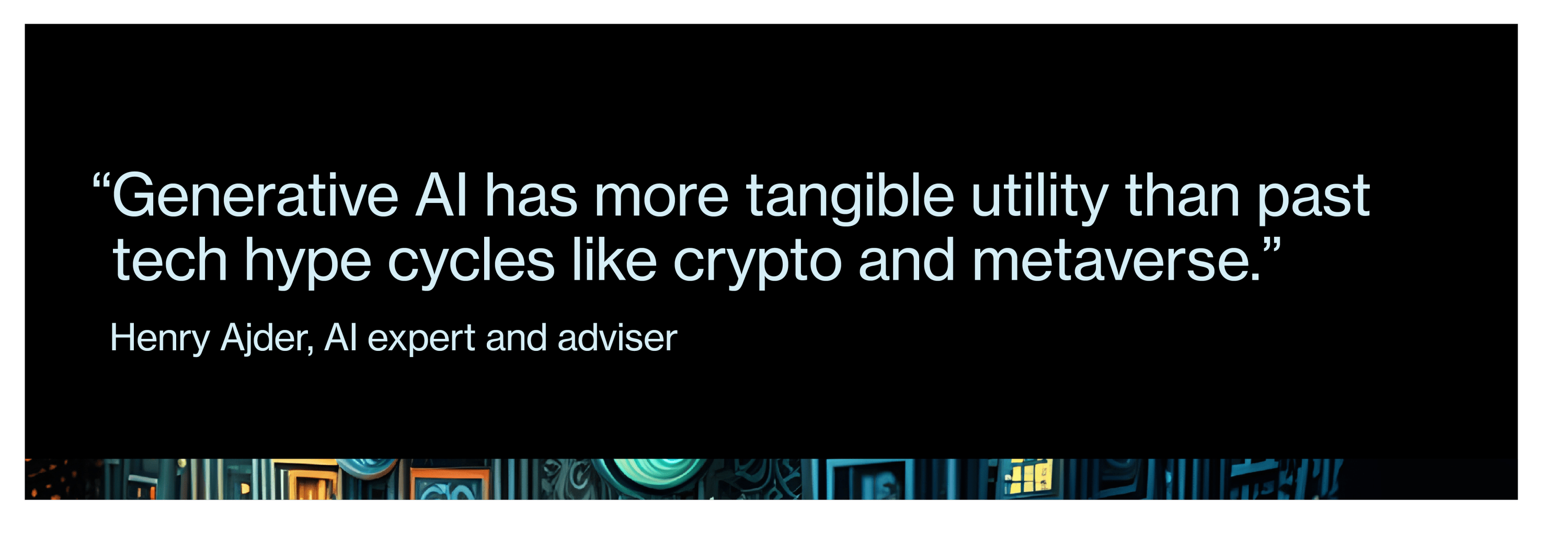Subtotal: 175,57€ (incl. VAT)
Generative AI deployment: Strategies for smooth scaling

After a procession of overhyped technologies like Web3, the metaverse, and blockchain, executives are bracing for the tidal wave of generative AI, a shift some consider to be on par with the advent of the internet or the desktop computer. But with power comes responsibility, and generative AI offers as much risk as reward. The technology is testing legal regimes in copyright and intellectual property, creating new cyber and data governance threats, and setting off automation anxiety in the workforce.

Organizations need to move quickly to keep up with stakeholder expectations, yet they must proceed carefully to ensure they do not fall foul of regulations or ethical standards in areas like data privacy and bias. Operationally, enterprises need to reconfigure their workforce and forge partnerships with tech companies to design safe, effective, and reliable generative AI.
To gauge the thinking of business decision-makers at this crossroads, MIT Technology Review Insights polled 1,000 executives about their current and expected generative AI use cases, implementation barriers, technology strategies, and workforce planning. Combined with insights from an expert interview panel, this poll offers a view into today’s major strategic considerations for generative AI, helping executives reason through the major decisions they are being called upon to make.
Key findings from the poll and interviews include the following:
- Executives recognize the transformational potential of generative AI, but they are moving cautiously to deploy. Nearly all firms believe generative AI will affect their business, with a mere 4% saying it will not affect them. But at this point, only 9% have fully deployed a generative AI use case in their organization. This figure is as low as 2% in the government sector, while financial services (17%) and IT (28%) are the most likely to have deployed a use case. The biggest hurdle to deployment is understanding generative AI risks, selected as a top-three challenge by 59% of respondents.

- Companies will not go it alone: Partnerships with both startups and Big Tech will be critical to smooth scaling. Most executives (75%) plan to work with partners to bring generative AI to their organization at scale, and very few (10%) consider partnering to be a top implementation challenge, suggesting that a strong ecosystem of providers and services is available for collaboration and co-creation. While Big Tech, as developers of generative AI models and purveyors of AI-enabled software, has an ecosystem advantage, startups enjoy advantages in several specialized niches. Executives are somewhat more likely to plan to team up with small AI-focused companies (43%) than large tech firms (32%).
- Access to generative AI will be democratized across the economy. Company size has no bearing on a firm’s likelihood to be experimenting with generative AI, our poll found. Small companies (those with annual revenue less than $500 million) were three times more likely than mid-sized firms ($500 million to $1 billion) to have already deployed a generative AI use case (13% versus 4%). In fact, these small companies had deployment and experimentation rates similar to those of the very largest companies (those with revenue greater than $10 billion). Affordable generative AI tools could boost smaller businesses in the same way as cloud computing, which granted companies access to tools and computational resources that would once have required huge financial investments in hardware and technical expertise.

- One-quarter of respondents expect generative AI’s primary effect to be a reduction in their workforce. The figure was higher in industrial sectors like energy and utilities (43%), manufacturing (34%), and transport and logistics (31%). It was lowest in IT and telecommunications (7%). Overall, this is a modest figure compared to the more dystopian job replacement scenarios in circulation. Demand for skills is increasing in technical fields that focus on operationalizing AI models and in organizational and management positions tackling thorny topics including ethics and risk. AI is democratizing technical skills across the workforce in ways that could lead to new job opportunities and increased employee satisfaction. But experts caution that, if deployed poorly and without meaningful consultation, generative AI could degrade the qualitative experience of human work.
- Regulation looms, but uncertainty is today’s greatest challenge. Generative AI has spurred a flurry of activity as legislators try to get their arms around the risks, but truly impactful regulation will move at the speed of government. In the meantime, many business leaders (40%) consider engaging with regulation or regulatory uncertainty a primary challenge of generative AI adoption. This varies greatly by industry, from a high of 54% in government to a low of 20% in IT and telecommunications.
This content was produced by Insights, the custom content arm of MIT Technology Review. It was not written by MIT Technology Review’s editorial staff.




